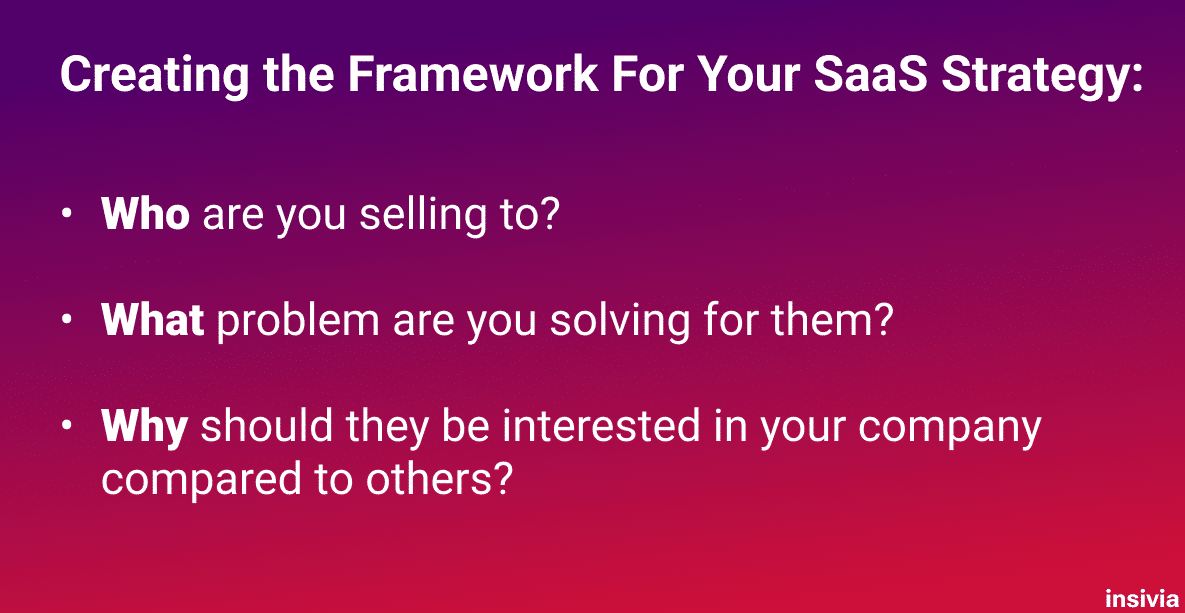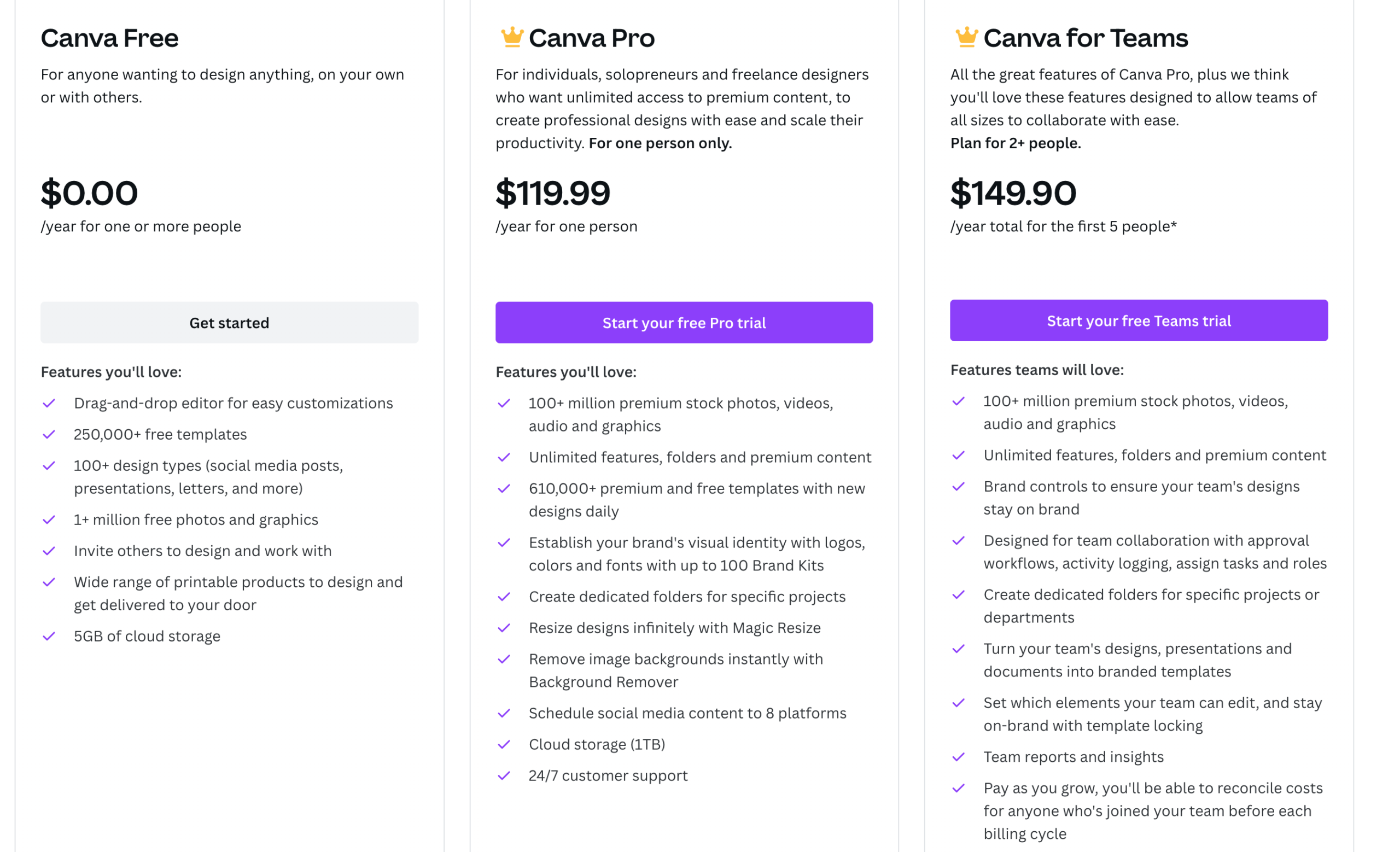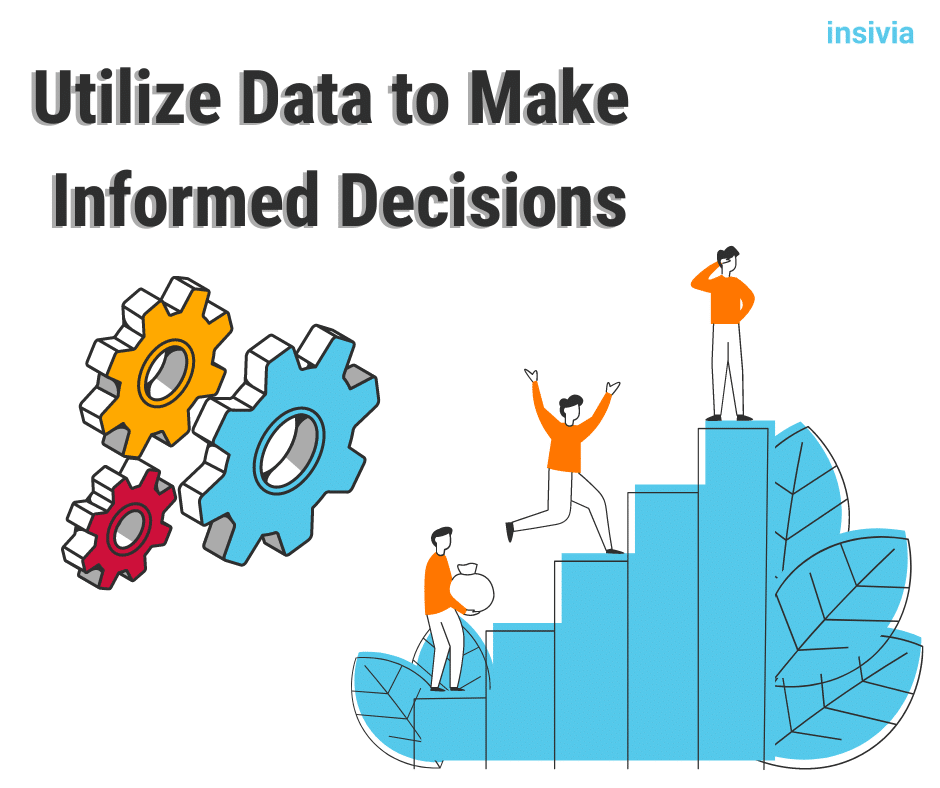For B2B SaaS companies, ensuring that your marketing and sales strategies are aligned is vital. You need to think of innovative tactics that will bring in your niche target consumer. In order to do that you need to fully establish your who, what, and why.

Once you figure out the answers to those questions, you can come up with your value proposition. Then, your marketing and sales strategy should revolve around that. Let’s jump into the steps it takes to develop a strong SaaS sales strategy and the tools you need to execute it for your business.
Establish a Compelling Value Proposition
Creating a solid value proposition gives your potential customers clear insight into what your product offers and solves. It should also express why you are the best available choice for them. As a result of this, there’s a higher chance that they will convert and become a customer.
Ask yourself what the main purpose of our software is and what audience would best benefit from that service. If you don’t narrow the audience you’re catering to, your sales and marketing initiatives won’t have a clear direction.
Research conducted by Gartner shows that 70 to 90% of a buying decision happens before a salesperson gets involved. So, expressing your value proposition distinctly is very important in order to peak the interest in the right people that will benefit the most from your product or service.
To create a strong value proposition, start by identifying the key pain points that your target audience faces. Then, demonstrate how your product or service can solve those pain points in a way that’s different and better than what your competitors offer.
By clearly communicating the value that your product or service provides, you can make it easy for your target audience to see why they should choose your solution over others.
Define Your Target Audience
Before you can create a killer SaaS sales strategy, you need to understand who your target audience is. This means identifying the types of businesses and individuals who are most likely to use your product or service and tailoring your marketing efforts to effectively reach them.
To define your target audience, start by analyzing your existing customer base. Who are your most loyal customers? What industries do they work in? By answering these questions, you can start to build a profile of your ideal customer.
Understanding the demographic and industry your company should aim for is crucial for your success and growth. For example, if you know the age range and industry of your target market, you can narrow down which social media channels you should utilize.
You can also use tools like Google Analytics and social media channels to gain insights into your audience’s demographics, interests, and behaviors. This information can help you create targeted marketing campaigns that resonate with your target audience.
Set Attainable Goals
Setting attainable sales and marketing goals is an essential part of setting up an effective strategy. Doing so helps to ensure that your efforts will be focused on the most impactful areas and gain the best results. A good starting point is to create SMART goals—strategic, measurable, achievable, realistic, and time-bound objectives. These are intended to help hold yourself accountable for staying on track throughout the course of achieving these objectives. In addition, working towards attainable goals can lead to improved morale as it gives employees something tangible to aim for in their daily duties.
At Insivia, we put an emphasis on driving results and pay close attention to KPIs that will measure growth. Not only that, but you need to make sure that the goals you’re setting are attainable since 80% of businesses fail to achieve the goals they aim to hit. You can spend as much money as you’d like on a project, but you want to ensure that the goal makes sense and is feasible for your business.
These attainable goals apply directly to your sales and marketing initiatives. How many demos or leads are you looking to gain each week or month? What sales or marketing efforts are being executed to get you to that metric? If there aren’t any, you need to evaluate what tactics will help you climb the ladder to reach your core business goals.
Create Supplemental Marketing Content To Drive TOFU Leads
Sales and marketing can go hand in hand since your content strategy can help your sales team. For example, high-level explainer videos can be a great supplemental resource for your sales teams to utilize for potential prospects.
You want your marketing team to create content that drives top-of-the-funnel leads. This can be done on multiple channels such as your website, social media, and blogs. This material is specifically created to pique the potential customers’ interest to look further into your brand and product offerings. The main goal should be to drive them to your main website.
Create content that helps frame yourself as an expert in your industry and in your product/service. This can be done through blog content, videos, social media posts, podcasts, and more. You need to identify which form of content will resonate the most with your target market.
After you’ve established what content you’re going to be executing, it’s time to create a content calendar that outlines your topics, formats, and publishing schedule. Be sure to include a mix of evergreen content (content that is always relevant) and timely content (content that is relevant to current events or industry trends).
Implementing a content marketing strategy can be extremely beneficial as 57% of the most successful B2B SaaS businesses have generated sales and revenue from their initiatives.
Be Strategic With Free Trials & Demos
Free trials are essential for software success, as they allow interested customers to receive a glimpse of what they’d get if they upgrade. But don’t just rush into getting free trials out there; create a thoughtful strategy that covers the specific duration you offer, who will handle customer service during the trial period, and how you will follow up with users after their trial has ended.
This type of thoughtful strategy can exponentially increase conversions from your free trials and demos, resulting in increased ROI. Make sure your marketing and sales teams are on the same page with what you’re offering during this trial period.
Determine what trial length would work best for your service. Depending on how complex your offerings are, you may want a longer free-trial period. Some common time frames are 7, 14, or 30-day trials. How long would it take for your target customers to see the value and benefits of your software?
Another strategy to gain new users is by offering a freemium model of your software. Companies like Canva or MailChimp have this option available. For this business model, you want to give these free users the basic features of your service. This gives them a taste of what your product can do by just scratching the surface. If they want to use even more of your useful features, they will have to upgrade their plan to a paid model. Freemium users give you the perfect opportunity to advertise and upsell your paid features. Canva does a great job of this by always having a slight mention of their “Pro” and “Team” offerings:

Of course, you need to decipher what strategy would work best for your business. According to Totango, 17% of SaaS companies offer a Freemium model, while 44% have a free trial option. These are two popular forms to drive your conversion rate, but it depends on your product/service and how your potential users would experience it best.
Provide Strong Support
The biggest component of the customer experience is the support you provide them every step of the way. If you choose to go the free trial route, make sure you are there to answer any questions they have throughout the period that they’re testing out your software.
For some SaaS businesses, customer support may be forgotten, as 37% of companies don’t have a clearly defined CS strategy implemented.
If you have a strong support system for your users no matter what stage of the buying cycle they’re in, you’ll start to build trust with them. It shows that you care about them and the experience that they’re having with your product.
So, your business should focus on executing a strong support system for your entire customer base. You don’t want the pre-existing customers to go unnoticed because you’re solely focused on new users. That’s when your churn rate can rise and negatively affect your brand’s reputation.
Gather & Utilize Data
The plus side to implementing a sales strategy is that you can gather the data from your initiatives and utilize it to make improvements along the way. Decipher what’s working and what’s not. You don’t want to keep repeating the same process if you’re not seeing the results you wish to achieve.

The behavior your target audience has with your business can give you useful numbers to go off of when you make future sales and marketing decisions. Here are some metrics you should monitor:
-
- Conversion Rate: When you track how many consumers are purchasing your product, you can decide whether or not you should tweak your strategies. Where are your conversions coming from? Is it through a particular marketing channel or direct cold-calling? Hone in on whatever is working for you and try to optimize the process even further.
-
- Customer Acquisition Cost (CAC): This measures the cost you’re spending for marketing and sales in order to acquire new customers. SaaS companies normally have to work harder in the early stages to recover from the costs of new customers, but once your business gets more established, you can figure out the optimal amount of money it should take you to acquire new users.
-
- Monthly Recurring Revenue (MRR): Like the name implies, this. is the total amount of revenue you’re gaining from your users monthly. This helps you evaluate your pricing strategy over time and gives you insight into whether or not you need to implement any changes to your subscription services and/or packages.
-
- Churn Rate: Knowing how many customers you’re frequently losing is just as important as the number of customers you’re acquiring. If this number is high, then you need to re-evaluate your approach and figure out how you can make the customer experience better. The cost of acquiring new customers is roughly 5-25 times more expensive than retaining an existing one.
Those are just a few important metrics to keep in mind when you’re budgeting for marketing and sales initiatives. Depending on how well your business is performing, you may have to brainstorm new ideas that could optimize the sales process and improve the customer experience once you acquire them. Your sales team should also always be working to increase the number of leads and conversions.
Make Connections
A huge factor for sales and marketing is making connections. Your teams can do this in a variety of ways online. LinkedIn is a great source for finding companies that would benefit the most from your SaaS product. You can also utilize affiliate marketing and gather leaders in your industry that can serve as advocates for your business and brand. This form of marketing continues to be a popular choice for SaaS companies as 81% of brands rely on affiliate programs.
Email campaigns are another way to make connections with your ideal customers and give them even more insight into how your product solves a problem for them. Depending on how they interact with your emails, you can move them through a pipeline that drives them toward a particular action. This could range from a webinar, demo, product tour, etc. Your emails can serve as educational content that shows your audience that you’re an expert in the industry.
Research Competitors
The competition is fierce in the SaaS industry. When it comes to your enterprise software sales strategy, you should also keep in mind what your competitors are doing in your industry. What tactics are they utilizing to drive their conversions? What content are they creating that’s amplifying their marketing efforts?
Business News Daily recommends that you follow an 80/20 rule. This means that you should keep your eye on 80% of your direct competitors and 20% of your top competitors. Direct competitors are other companies that are around the same size as you. But, you don’t want to completely negate your larger competitors either. Companies in your market that hold a bigger market share than you can give you insight into what tactics you should deploy in order to grow to their size.
When researching SaaS competitors, the main objective is to gain a better understanding of their offerings and determine the difference between their services compared with yours. Carrying out competitor research enables you to determine where they excel and where they may be lacking. This helps your company focus on those areas where you can compete and focus on what advantages your company provides. You’ll gain an understanding in order to market yourself to stand out from the crowd. Additionally, competitor research should also include an analysis of pricing models, customer reviews, and technology being utilized. By understanding all of these factors, you are able to better position yourself for success within the SaaS market.
Optimize Your Website for Conversions
Your website is the face of your SaaS business, and it’s often the first point of contact that potential customers have with your brand. That’s why it’s essential to optimize your website for conversions, making it easy for visitors to understand your value proposition and take action.
To optimize your website for conversions, start by simplifying your messaging. Use clear and concise language to communicate what your product does, and make it easy for visitors to understand how your service can benefit them.
You should also focus on designing a user-friendly website that’s easy to navigate. Use visual elements like images and videos to break up text and make your website more engaging. You should also ensure that your website is mobile-friendly, as more people are accessing the web from their smartphones.
One factor that is vital for your website is clear CTAs. These should be clear throughout your website and encourage visitors to take the next step in the customer journey. Whether it’s signing up for a free trial, downloading an ebook, or scheduling a demo, make it easy for visitors to take action and move further into the sales funnel. You can also make these CTAs personalized depending on what landing pages they live on. This is a proven strategy since according to Hubspot, personalized CTAs convert 202% better than generic ones.
Key Takeaways
Developing a winning SaaS marketing sales strategy takes time and effort, but by following the steps outlined in this article, you can create a plan that drives results for your business.
As you can see, there are many tactics that you can implement to succeed in the competitive SaaS landscape. By continuously refining your strategy based on data and results, you can stay ahead of the competition and grow your SaaS business over time.
